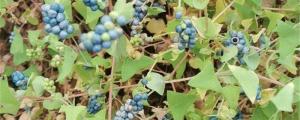What To Do When You Get Seeds From Pot Plants
Getting seeds from pot plants is an exciting experience for most growers as it signifies that their plants have completed their growth cycle and are ready to reproduce. However, knowing what to do with these seeds is crucial to ensure that you can use them effectively. In this article, we will discuss what you can do when you get seeds from pot plants.
1. Harvest The Seeds
The first step to take when you get seeds from pot plants is to harvest them. You need to carefully pluck the seeds from the flowers or buds of the plants and separate them from the dried plant material. It's essential to be gentle while harvesting the seeds to avoid damaging them. You can use your fingers or a pair of tweezers to do this.
2. Clean The Seeds
After harvesting the seeds, you need to clean them to remove any residual plant material. You can put the seeds in a sieve or a strainer and wash them under running water while gently rubbing them with your fingers. After washing, you can let the seeds dry for a few hours on a paper towel or a plate.
3. Store The Seeds Properly
Proper storage of seeds is crucial to ensure that they remain viable until you're ready to use them. You can store the seeds in a cool, dry, and dark place, such as a refrigerator or a freezer. You can also store them in a sealed container or a plastic bag with a desiccant, such as silica gel, to absorb any moisture. Avoid exposing the seeds to light and heat as it can reduce their viability.
4. Germinate The Seeds
If you want to grow new plants from your seeds, you need to germinate them. To do this, you can soak the seeds overnight in water and then plant them in a soilless mix or seed-starting medium. Cover the seeds with a thin layer of soil and keep them moist until they sprout. It's essential to provide the seeds with proper light, temperature, and moisture conditions for successful germination.
5. Use The Seeds For Breeding
If you're a breeder, you can use the seeds from pot plants to create new strains with desirable characteristics. To do this, you need to select male and female plants with the traits you want to combine and cross-pollinate them. Collect the seeds produced from the resulting hybrid plants, and you can use them for further breeding or grow them out to create a new strain.
Conclusion
Getting seeds from pot plants can be a rewarding experience for growers. It allows them to propagate their plants and create new strains with desirable traits. By following the steps discussed in this article, you can ensure that you handle your seeds correctly and maximize their potential. Always remember to store your seeds properly, and germinate them under optimal conditions for successful growth.

 how many times do yo...
how many times do yo... how many planted tre...
how many planted tre... how many pine trees ...
how many pine trees ... how many pecan trees...
how many pecan trees... how many plants comp...
how many plants comp... how many plants can ...
how many plants can ... how many plants and ...
how many plants and ... how many pepper plan...
how many pepper plan...
































